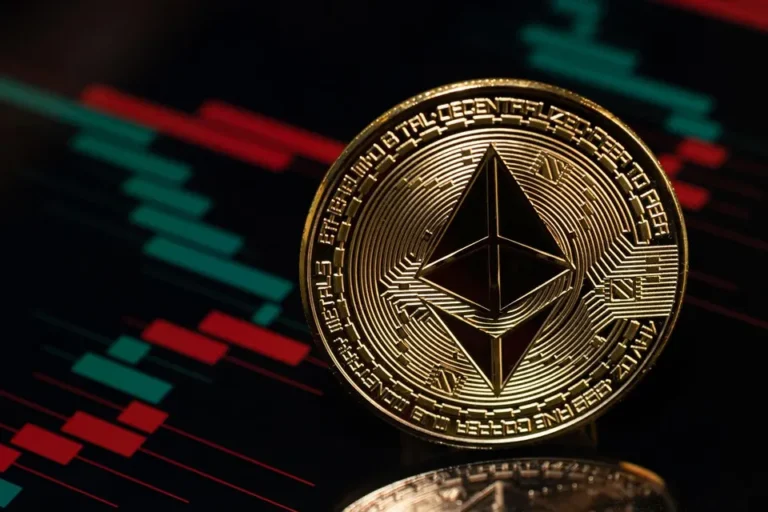Ethereum has always been at the heart of the decentralized revolution, continually pushing the boundaries of what blockchain technology can achieve. From its role in powering decentralized finance (DeFi) applications to enabling non-fungible tokens (NFTs) and beyond, Ethereum’s impact on the blockchain ecosystem is undeniable. However, its journey doesn’t stop here. Ethereum is evolving rapidly, with new upgrades, protocol changes, and innovations reshaping its future.
In this article, we’ll take a closer look at the latest network upgrades and developments shaping Ethereum’s path forward. From the long-awaited transition to Ethereum 2.0 to advancements in scalability, security, and sustainability, these updates are set to influence not just Ethereum, but the entire blockchain ecosystem.
Ethereum 2.0: The Long-Awaited Transition to Proof-of-Stake
One of the most anticipated events in Ethereum’s history has been its shift from Proof-of-Work (PoW) to Proof-of-Stake (PoS). This monumental upgrade, known as Ethereum 2.0, aims to make Ethereum more energy-efficient, scalable, and secure.
What is Ethereum 2.0?
Ethereum 2.0 is a series of upgrades that will replace Ethereum’s existing consensus mechanism (PoW) with PoS. Under PoS, instead of miners using computational power to secure the network, validators “stake” their ETH to participate in block validation and transaction processing. This transition significantly reduces Ethereum’s energy consumption, making it a more environmentally friendly option compared to traditional proof-of-work blockchains like Bitcoin.
The upgrade is happening in phases, with The Merge in 2022 being the most significant milestone. The Merge officially switched Ethereum’s mainnet from PoW to PoS, reducing Ethereum’s energy consumption by over 99%. But the upgrades don’t end there.
What’s Next for Ethereum 2.0?
While the Merge marked a major shift, Ethereum 2.0 will continue to evolve in the coming years. The key phases still to come include:
- Shard Chains: This is one of the most anticipated upgrades in Ethereum’s roadmap. Sharding will split the Ethereum network into smaller, more manageable parts (called shards), each capable of processing its own transactions and smart contracts. This will increase transaction throughput and scalability, allowing Ethereum to handle a much higher number of transactions per second (TPS) than it currently can.
- Danksharding: A specific type of sharding aimed at improving Ethereum’s data availability and reducing congestion on the network. This will enable even more efficient transaction processing.
- EIP-4844 (Proto-danksharding): This upgrade is designed to further increase Ethereum’s scalability by improving the way data is processed and reducing costs, making Ethereum more efficient and cost-effective for developers and users.
Scalability: Layer-2 Solutions and Rollups
While Ethereum’s shift to PoS is a game-changer, scalability remains a critical issue. Ethereum’s base layer can only handle a limited number of transactions per second, which has resulted in high gas fees and network congestion during periods of heavy activity. To address this, the Ethereum community has been exploring Layer-2 solutions.
What Are Layer-2 Solutions?
Layer-2 solutions are built on top of the Ethereum mainnet (Layer-1) and aim to offload the computational load by processing transactions off-chain while still ensuring the security and decentralization of the base layer. The two most popular Layer-2 solutions currently are rollups (specifically, Optimistic Rollups and ZK-Rollups).
- Optimistic Rollups: These work by processing transactions off-chain but submitting a summary of those transactions to the Ethereum mainnet. They rely on the assumption that the transactions are valid unless proven otherwise. This reduces the need for expensive computation on the Ethereum mainnet while still ensuring trust.
- ZK-Rollups (Zero-Knowledge Rollups): ZK-Rollups take a different approach by using zero-knowledge proofs to validate batches of transactions off-chain before submitting them to the Ethereum mainnet. ZK-Rollups offer even greater scalability and lower costs compared to Optimistic Rollups, as they require less data to be stored on the Ethereum network.
The success of Layer-2 solutions is critical for Ethereum to scale and support the growing number of decentralized applications (dApps), DeFi protocols, and NFTs that rely on Ethereum for their operations.
Security and Privacy Enhancements: A Stronger Ethereum
As Ethereum continues to grow, ensuring its security and privacy is paramount. Over the years, Ethereum has experienced a number of high-profile vulnerabilities and hacks. To address these, the Ethereum network has been continually improving its security protocols.
Zero-Knowledge Proofs (ZKPs)
One of the most significant developments in Ethereum’s security upgrades is the integration of zero-knowledge proofs (ZKPs). ZKPs allow one party to prove to another that they know a value without revealing the value itself. This cryptographic method enhances privacy and security by enabling private transactions and data storage without sacrificing the transparency or integrity of the blockchain.
Ethereum’s integration of ZK-SNARKs (Zero-Knowledge Succinct Non-Interactive Arguments of Knowledge) has already improved scalability and transaction privacy. As Ethereum continues to integrate zk-SNARKs and zk-STARKs (Scalable Transparent Arguments of Knowledge), the network will become increasingly secure, with users able to keep their sensitive information private while still participating in the Ethereum ecosystem.
EIP-1559: A Deflationary Mechanism
Another important upgrade to Ethereum’s network is EIP-1559, which was implemented in 2021. This proposal introduced a new fee structure that burns a portion of the transaction fees, making ETH a deflationary asset. By reducing the total supply of ETH over time, EIP-1559 makes Ethereum’s tokenomics more sustainable, providing upward pressure on the price of ETH in the long run.
Ethereum and DeFi: A Thriving Ecosystem
Ethereum remains the dominant platform for decentralized finance (DeFi), with most DeFi protocols built on its blockchain. As Ethereum upgrades continue, DeFi applications are becoming more efficient, scalable, and secure. With Ethereum 2.0, users can expect reduced gas fees and faster transaction times, which will enhance the overall DeFi experience.
Furthermore, Ethereum’s dominance in the NFT space continues to grow. While other blockchains like Solana and Flow have entered the NFT space, Ethereum remains the leader in terms of market share, with most high-profile NFT projects and platforms launching on Ethereum.
Ethereum’s Role in Web3 and Beyond
As Ethereum evolves, it continues to play a central role in the development of the Web3 ecosystem. Ethereum’s smart contract functionality powers not only DeFi and NFTs but also decentralized autonomous organizations (DAOs), decentralized social media platforms, and decentralized identity systems.
The Ethereum Virtual Machine (EVM), the decentralized computer that executes smart contracts on the Ethereum blockchain, serves as the foundation for countless decentralized applications (dApps) that form the backbone of the Web3 internet. As Ethereum becomes more scalable and efficient, it will enable the Web3 movement to flourish, creating a more decentralized, user-controlled internet.
Conclusion: Ethereum’s Bright Future
Ethereum is undergoing a profound evolution, with network upgrades and technological advancements positioning it to remain the leader in the blockchain space. The transition to Ethereum 2.0, the rise of Layer-2 solutions, privacy enhancements through ZKPs, and the continued growth of DeFi and NFTs all contribute to Ethereum’s ongoing transformation.
The road ahead for Ethereum is full of promise. As Ethereum becomes more scalable, secure, and sustainable, it will continue to empower developers and users alike, helping shape the future of the decentralized web. If Ethereum 2.0 delivers on its promises, the blockchain will not only strengthen its position in the DeFi and NFT ecosystems but also redefine how we think about digital ownership, privacy, and trust in the digital age.






